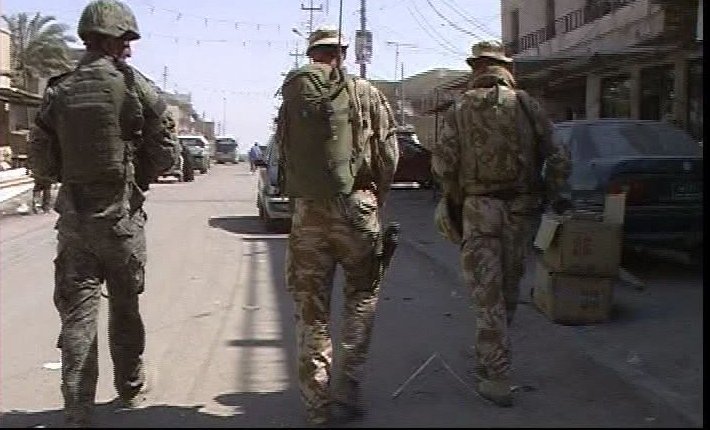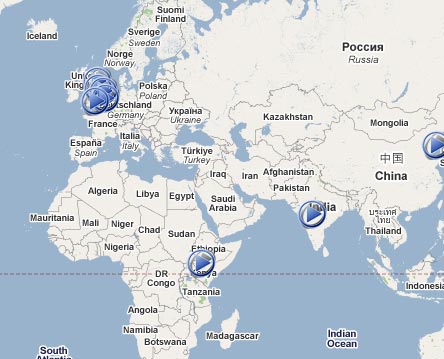This is the second in a series of six blog posts by Adam Westbrook, each with six tips for the next generation of freelance multimedia journalists, republished here with permission.
Follow the series at this link or visit Adam’s blog.
Video
Video has by far and away become the most popular medium for the multimedia journalist – to the extent it almost seems many won’t consider it a truly multimedia project unless it’s got a bit of video in it. The thing is, video is a tricky medium and must be treated differently in the world of online journalism.
1) Video doesn’t need to be expensive
Don’t be fooled into thinking you can’t do video just because you haven’t got any cash. Sure, if you want to go right to the top range, say a Sony EX3, Final Cut Pro and After Effects, yes, it’s going to set you back about £3,000 ($5,000). But high quality can be achieved on lower budgets.
Check out my article on how I put together an entire film making kit for £500 ($800).
2) Shoot for the edit
If there’s one piece of advice for multimedia journalists making films – it comes from Harris Watts, in a book he published 20 years ago. In ‘Directing on Camera’ he describes exactly what shooting footage is:
“Shooting is collecting pictures and sound for editing (…) so when you shoot, shoot for editing. Take your shots in a way that keeps your options open.”
Filming with the final piece firmly in mind will keep your shooting focused and short. So when you start filming, start looking for close ups and sequences. The latter is the hardest: an action which tells your story, told over two or more shots.
Sequences are vital to storytelling and must be thought through.
A simple sequence: shot 1, soldiers feet walking from behind
Then to a wide shot of the same action…
…and then to a wide reverse showing more detail
3) Master depth of field
In online video, close-ups matter. The most effective way to hold close-ups – especially of a person – is to master depth of field. Put simply the depth of field how much of your shot in front of and behind your subject is kept in focus. It is controlled by the aperture on your camera – so you’ll need a camera with a manual iris setting.
Your aim – especially with close-ups – is to have your subject in clear focus, and everything behind them blurred: Alexandra Garcia does it very well in her Washington Post In-Scene series. (HT: Innovative Interactivity)

Screenshot: Innovative Interactivity
Here’s a quick guide to getting to grips with depth of field:
- you need a good distance between the camera and subject
- a good distance between the subject and the background
- and a low f-stop on your iris – around f2.8, depending on how much light there is in your scene. A short focal length does this too.
- You may need to zoom in on your subject from a distance
4) Never wallpaper
If there was ever an example of the phrase ‘easier said than done’ this would be it. It’s a simple tip on first read: make sure every shot in your film is there for a reason. But with pressures of time or bad planning you can often find yourself ‘wallpapering’ shots just to fill a gap.
In his excellent book The Television News Handbook Vin Ray says following this rule will help you out no end:
“One simple rule will dramatically improve your television packaging: never use a shot – any shot – as wallpaper’. Never just write across pictures as though they weren’t there, leaving the viewer wondering what they’re looking at. Never ever.”
5) Look for the detail and the telling shot
Broadcast journalists are taught to look for the ‘telling shot’, and more often than not make it the first image. If your story is about a fire at a school, the first thing the audience need to see is the school on fire. If it’s about a woman with cancer, we must see her in shot immediately.
But the telling shot extends further: you can enhance your storytelling by looking for little details which really bring your story to life.
Vin Ray says looking for the little details are what set great camera operators apart from the rest:
“Small details make a big difference. Nervous hands; pictures on a mantelpiece; someone whispering into an ear; a hand clutching a toy; details of a life.”
I’m midway through shooting a short documentary about a former prisoner turned lawyer. One of the first things I noticed when I met him was a copy of the Shawshank Redemption on his coffee table – a great little vignette to help understand the character.
6) Break the rules
The worst thing a multimedia journalist can do when producing video for the web is to replicate television – unless that’s your commission of course. TV is full of rules and formulas, all designed to hide edits, look good to the eye, and sometimes deceive. Fact is, online video journalism provides the chance to escape all that.
Sure it must look good, but be prepared to experiment – you’ll be amazed what people will put up with online:
- Cutaways are often used to cover over edits in interviews; why not be honest and use a simple flash-dissolve instead. Your audience deserves to know where you’ve edited, right?
- TV packages can’t operate without being leaden with voice over, but your online films don’t need to be.
- Piece to cameras don’t need to be woodenly delivered with the camera on a tripod.
The final word…
Here’s VJ pioneer David Dunkley-Gyimah speaking at this year’s SxSW event in the US:
“When it comes to the net, there is no code yet as I believe that is set in stone (…) we’ve all been taking TV’s language and applying that and it hasn’t quite worked. Video journalism needs a more cinematic, heightened visual base.”




 Courtesy of Ian Reeves and Kent University’s
Courtesy of Ian Reeves and Kent University’s